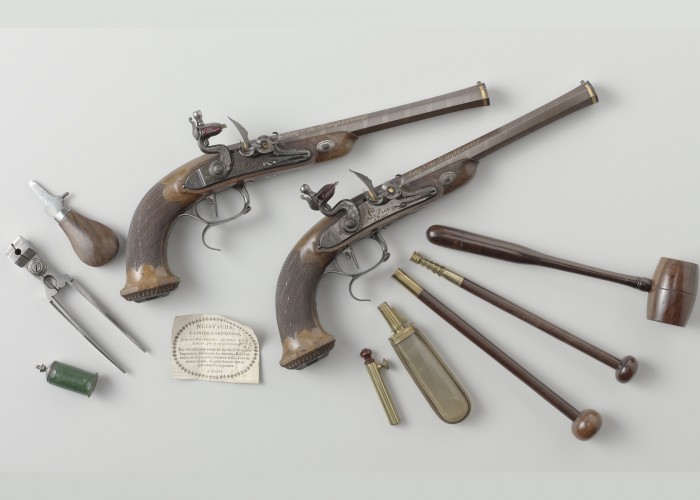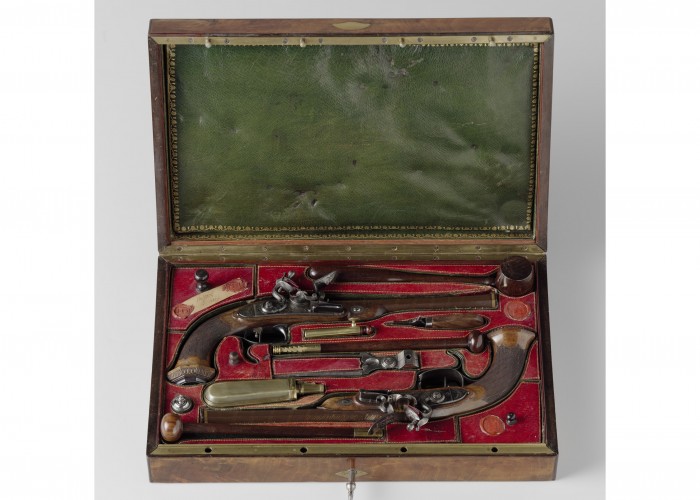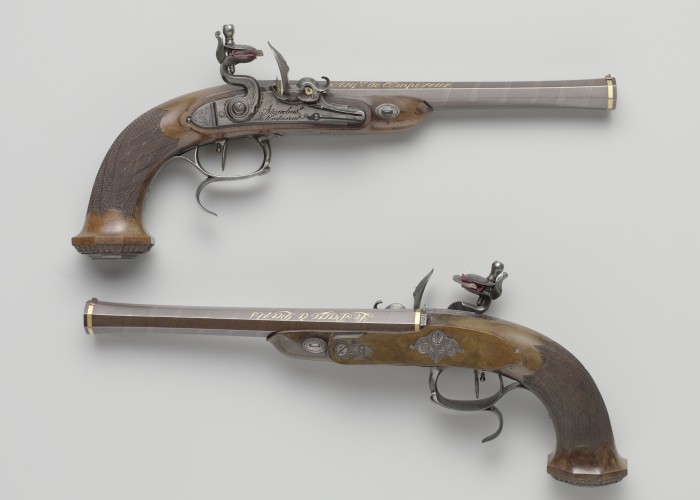Case of Napoleon’s Pistols
This a pair of very good quality flintlock pistols which belonged to the Emperor Napoleon I and which were captured after his defeat at the Battle of Waterloo. Napoleon’s carriages and baggage train were looted by Allied troops, and these were taken by Dutch soldiers. Whilst these pistols may have belonged to Napoleon personally – they are engraved with his Imperial eagle – it is also possible that he kept them to present as a gift, should the occasion arise.
These lovely pistols are on display at the Riksmuseeum in Amsterdam. This is very appropriate, as the contribution that the Dutch made to the Allied Army and to the battle is often forgotten. They Dutch army fielded 17,000 troops. Their commander, the Prince of Orange (later King William II) was a Major General in the British Army, and was wounded in the shoulder by a musket ball. He was well liked by the British soldiers who nicknamed him “Slender Billy”. Later in 1826 the famous “Butte au lion” was raised in his honour on the spot where he was wounded. He was a very liberal king much loved by his subjects because of his reforms.
The pistols were made around 1813 – 1815 by Le Page of Paris, who was an Imperial gunmaker or “Arqubusier de l’Empereur”. His name is inlaid in gold on the barrels. They are of the highest quality and are much more fancy than English pistols of the period which tend to be quite plain, with understated decoration.
The barrels are made by a process known as “damascus” twist where a ribbon made of alternating iron and steel wires is wound – whilst white hot – around a central steel mandrel to make a tube. This was very strong and flexible.
The locks (which set off the gunpowder and fire the pistols) are very advanced with waterproof pans and anti-friction rollers on the steels. The pistols are fitter with set-triggers to aid accurate shooting.
They are contained in their red and green leather lined wooden case which contains the ammunition and all the tools you needed to load and clean them. The accessories include, bullet mould for use with molten lead, gun powder flask, gunpowder measure, mallet and two lading rods for ramming the charge, screwdriver and oil bottle.
-
Curatorial info
- Originating Museum: Rijksmuseum, Amsterdam
- Accession Number: NG-NM-11222
- Production Date: c. 1813
- Size: h 9.2 cm × w 45 cm × d 29 cm × d 58 cm
-
Use this image
You can download and use the high resolution image for use in a non-profit environment such as a school or college, but please take note of the license type and rights holder information below
- Rights Holder: Public Domain
- License Type:
Public Domain
Find it here
This object is in the collection of Rijksmuseum










